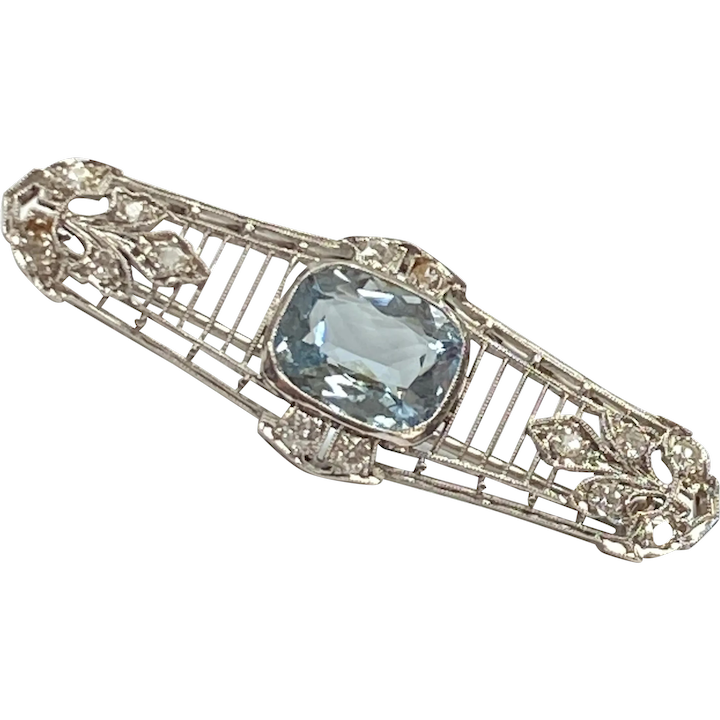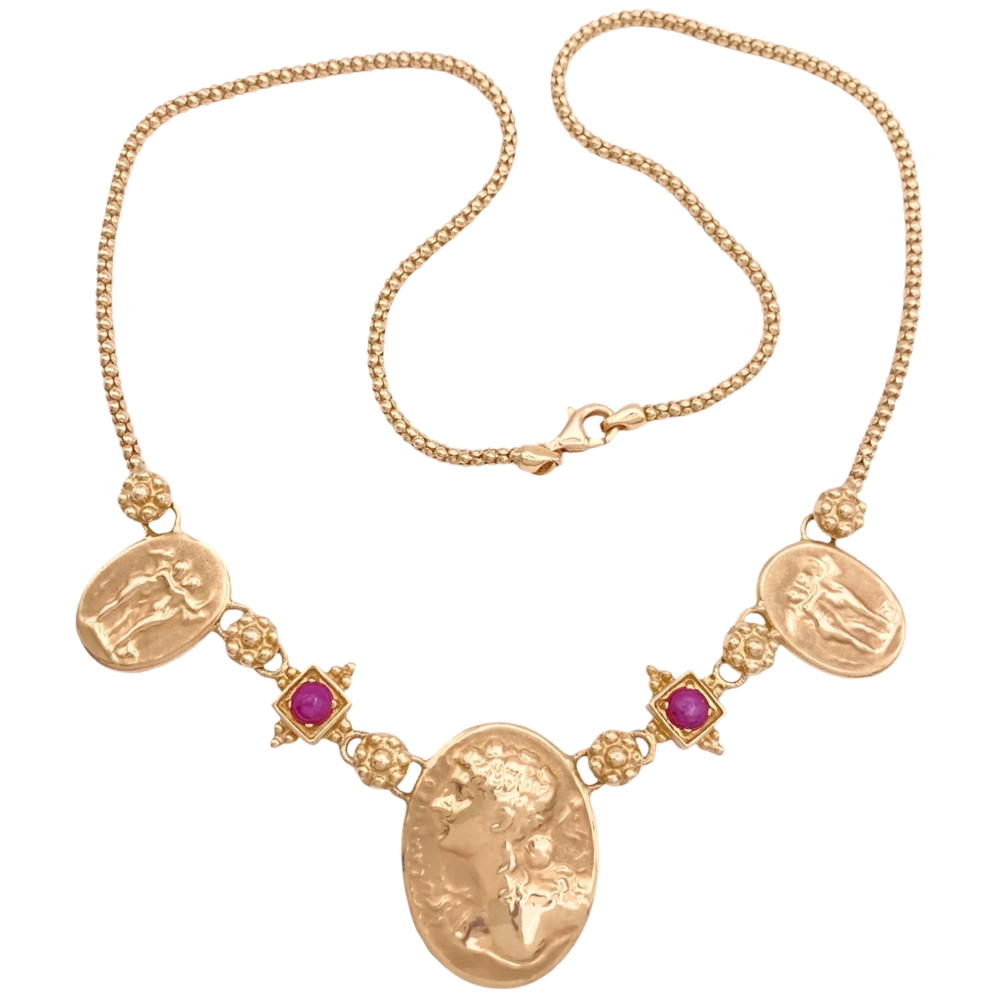Which Is Better for Jewelry? White Gold vs Yellow Gold vs Platinum
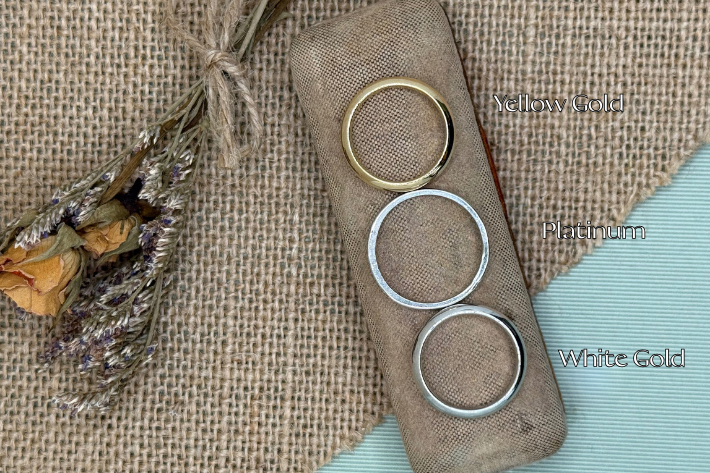
Choosing the perfect metal for your engagement ring, wedding band, or everyday jewelry isn’t just about looks—it’s about durability, price, maintenance, and how well it complements your style. While diamonds often steal the spotlight, the metal you choose for your setting can completely transform the overall appearance and longevity of your piece.
When deciding between white gold, yellow gold, and platinum, it’s important to understand the unique characteristics of each. At Arnold Jewelers, we often help customers navigate this decision by breaking down the differences. Let’s explore how these metals compare in terms of beauty, strength, and value.
What Are the Key Differences Between White Gold, Yellow Gold, and Platinum?
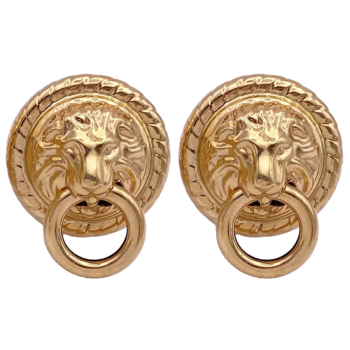
White gold, yellow gold, and platinum differ in composition, color, and price.
-
White gold is made by mixing pure gold with white alloys (like palladium or nickel) and coating it with rhodium for a silvery-white finish.
-
Yellow gold maintains its natural warm hue and is alloyed with metals like copper and zinc for strength.
-
Platinum is a naturally white metal that requires no plating and is significantly denser and rarer than gold.
Source: According to GIA.edu, the choice of metal can affect not only the appearance but also the wearability of your jewelry over time.
Which Metal is the Most Durable?
Platinum is the most durable of the three, ideal for everyday wear and heirloom-quality pieces. While white and yellow gold are strong, their durability depends on their karat rating. For example, 14k gold is harder than 18k gold because it contains a higher percentage of alloys.
-
White gold: The rhodium plating adds a protective layer but needs periodic re-plating.
-
Yellow gold: Naturally softer, especially in higher karats (18k or 22k).
-
Platinum: Densely packed molecules make it highly scratch- and tarnish-resistant.
Which Metal Costs More – White Gold, Yellow Gold, or Platinum?
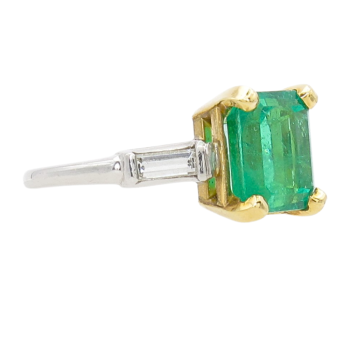
Platinum is the most expensive due to its rarity and density.
-
Platinum jewelry often costs 40–50% more than white gold.
-
White gold and yellow gold are generally more budget-friendly, with 14k gold offering the most cost-effective option compared to 18k.
-
Platinum pieces are heavier, which also increases their price because jewelry is sold by weight.
- Platinum is harder to work with as it has a higher melting point and is denser than gold. The labor cost is usually more on these pieces.
- White Gold tends to cost more than Yellow Gold over the long run. White gold requires maintenance to achieve that shiny silver sheen through rhodium plating.
Industry Insight: The price of gold fluctuates with market demand, but platinum’s rarity typically keeps its base price higher.
Which Metal Requires the Least Maintenance?
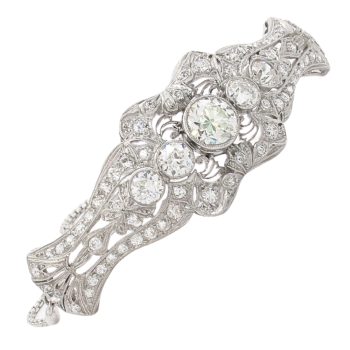
Platinum requires the least maintenance since it does not require plating. Over time, platinum develops a soft, matte finish called a patina, which many wearers find appealing.
-
White gold: Needs rhodium re-plating every 1–2 years to maintain its bright white appearance.
-
Yellow gold: Only needs occasional polishing to restore its shine.
Which Metal Looks Best for Different Skin Tones?

White gold and platinum look best on cool or fair skin tones, while yellow gold complements warm or olive skin tones. However, personal style and gemstone choice also play a major role. For example:
-
White gold or platinum pairs beautifully with diamonds, blue sapphires, or aquamarines.
-
Yellow gold enhances the warmth of gemstones like rubies, garnets, and emeralds.
Tip: Neutral metals like platinum also work for anyone who wants a versatile, timeless look.
White Gold vs Yellow Gold vs Platinum – Which One Should You Choose?
Your ideal metal depends on your lifestyle, preferences, and budget.
-
If you want luxury and durability, platinum is the top choice.
-
If you love classic, warm tones, yellow gold is timeless and elegant.
-
If you prefer a modern, silvery-white look at a lower cost, white gold is an excellent alternative to platinum.
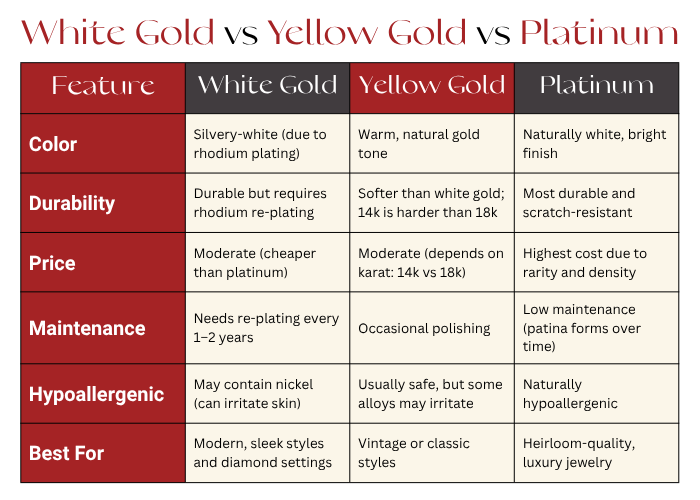
FAQs About White Gold, Yellow Gold, and Platinum
Q1: Does platinum tarnish over time?
A: No, platinum doesn’t tarnish, but it develops a natural patina that can be polished if desired.
Q2: Is white gold real gold?
A: Yes, white gold is genuine gold mixed with white alloys and coated with rhodium to achieve its silvery tone.
Q3: Which is better for sensitive skin – white gold or platinum?
A: Platinum is naturally hypoallergenic, while white gold with nickel alloys can cause irritation unless coated with rhodium.
Q4: Why does white gold need rhodium plating?
A: Rhodium enhances white gold’s brightness and protects against scratches, but it wears off over time and needs re-plating.
Conclusion: Choosing the Right Metal for Your Jewelry
Whether you’re shopping for an engagement ring, wedding band, or a statement piece, the choice between white gold, yellow gold, and platinum comes down to lifestyle, aesthetic preference, and budget. At Arnold Jewelers, we’ll help you find the perfect metal and setting for your jewelry so it can be cherished for years to come.
👉 Explore our White Gold jewelry collection
-
Categories:
- Jewelry Trends
- Jewelry Trends & Gift Ideas

